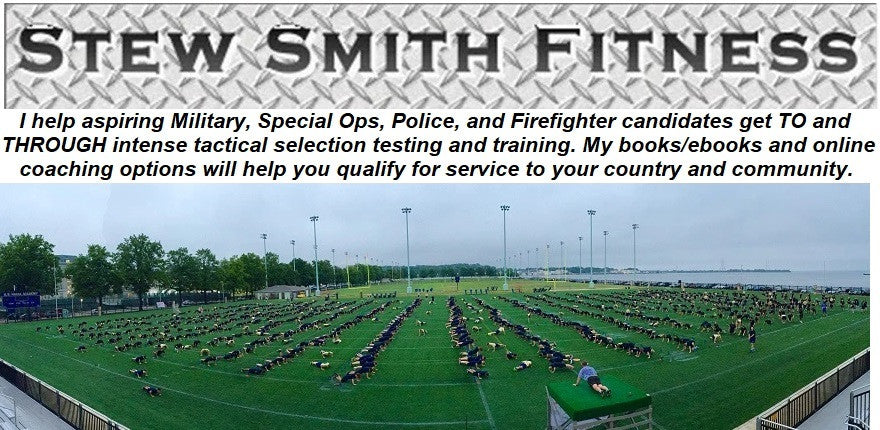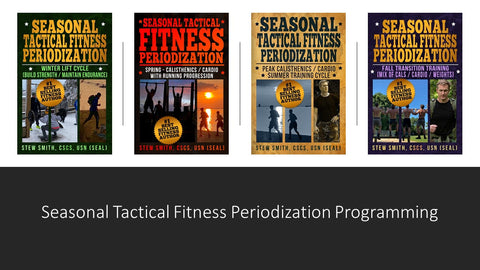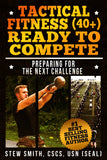Don't Set a Timeline to Join -
Set a Performance Starting Line

It is not possible for me to share how many young people tell me they have a 4-6 month deadline before they join a challenging tactical profession. For most people, that is not a logical path for adequately preparing for this journey, especially if your choice of tactical profession is in the special ops arena. Face it - you may need more time than 4-6 months - but that is not a problem because most people do. Don't set a timeline as a deadline to join, set performance goals as the determining factor before engaging the official enlistment process. Think of it as a "performance line" you need to reach and don't be like most people.
Sure, I get it. You are excited to serve your country or community. You are "ready" to leave your current situation. You just turned 18 and are an "adult" now - time to get a job. All of these are valid points on why you set such a short timeline, but depending on your current fitness level and job you are pursuing, you could be several months or even years away from actually being truly ready to endure and perform at the level you need to.
Ask Yourself - Are You REALLY Ready to Serve? (read this)
Because if you are not ready - it can be the Perfect Storm for Failure.
More information with Stew Smith LIVE Q and A Video:
What is a Performance Starting Line? Ask yourself the following:
1 - Are you finished growing? This is not a boy's game. Too many 17-19 year old's attend tough training and most do not make it. 18 maybe legally an adult, but for most people, they do not finish growing into full adult until 20-21 years old. Once again - the article above (Perfect Storm for Failure) applies to this age group as there are more than physical factors that come into play for the teenager today. Get through puberty first - then join. Some success stories of teens making it through training are impressive. There were typically earlier to manhood, grew up hard working / hard living and had the mindset needed to endure at an early age.
2 - Training Life - How long have you been physically training? This counts for manual labor jobs, sports, running, swimming, lifting, martial arts, etc for your entire life. Anything you have been doing and for a long period of time helps with your ability to endure challenging selection programs. But, the longer you have been training or specializing in something / neglecting other activities, the greater your injury history as well as your strengths and weakness divide. This divide could increase the need for longer periods of preparation for instance if you need to learn how to swim or cannot run far or fast enough due to over-use injuries. The less you have been training is also an issue. If you are just getting started with athletic movement, you WILL need significant more time to prepare that could be on the 1-2 year time frame.
Related Articles: What is Good Enough Spec Ops? (Run, Swim, PT)
What is Good Enough -Strength? (Lifts, plus load bearing)
3 - Where are you now? Not just on the PST (or physical test you need to pass to get TO the training), but where are you on all the elements of fitness: strength/power, speed/agility, endurance (run, swim, ruck), muscle stamina, flexibility / mobility, grip. Are you good at all of these? The graph below shows how important they all are to building the type of durability and work capacity needed to graduate physically / mentally challenging selection programs:
Use this Physical Assessment Tool to test yourself and discover any weaknesses you may have on the spectrum of the tactical fitness elements. 
4 - Can You Crush Selection Events? Once you have mastered the PT test, that is the first step to get TO the training. A significant part of your preparation time, should also be to start preparing for future selection challenges which will include longer runs and rucks, longer swims with fins, pool skills, and load bearing of heavy equipment (logs, boats, backpacks, other gear, and even people). For instance - 4 mile timed runs in under 28 minutes (boats, pants, beach), 2 mile swims in the ocean (70 minutes or less?), rucking at 10 min mile pace, grip strength to endure rope climbs, obstacles, gear carry, and other events like these will be required of you regularly (not just once or twice) WEEKLY. Are you ready for that?
Finally, if you are still in high school and planning to enlist into special ops pipeline, assess yourself for real. Are you really ready because statistically speaking you are not. Getting TO the training is not the same as getting THROUGH the training. Both phases of tactical fitness require time and persistent preparation to make your body and mind hard enough to withstand the long days and cold, wet, sandy, nights.
If you are good to go and meeting all the performance levels, feel confident and ready to leave home, get going with the enlistment / officer candidate process. My opinion is from my own experiences knowing I would not have made it at 18 years old as I barely passed USNA Plebe Summer physical standards and I was a 3 sport athlete in high school and starting training at age 12 with weights and calisthenics. I also noticed in my own BUDS class is we started out with nearly 75-80% teenagers, but only graduated a handful of them as our class went from 120 starters to 28 graduates over the six months of BUDS training.
But, if you are planning on going anyway - prove me wrong. I hope you prove me wrong.
There is More To StewSmithFitness.com than You May Know
(In fact, there are more than 40 books, 1000+ articles, online coaching - and more)
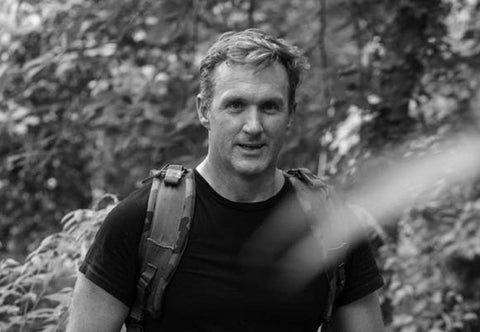
Who is Stew Smith CSCS? Coach, Trainer, Writer, Podcaster: I'm the former Navy SEAL that tactical candidates go to for books, ebooks and online coaching to prepare themselves to get to and through intense tactical assessment and selection programs and qualify for service in their chosen tactical profession. See More at StewSmithFitness.com
Where to Find More Information About Optimal Performance Training Programs
When you start training again, consider the seasonal tactical fitness model. I call it A WAY to train and obviously not the only way to train. But it offers the opportunity to never neglect your weaknesses, helps with flexibility and mobility, but will also put you at a level of physical abilities where you are happy with your overall ability to do just about anything. We have a system where the seasons dictate our training. When it is nicer outside, we tend to run and do more calisthenics. When it is colder and not so nice, we lift more, run less, and still maintain our outdoor activities with shorter runs and rucks. Check it out: Seasonal Tactical Fitness Periodization System.
These Seasonal Tactical Fitness BLOCK Periodization programs will walk you through 4 x 4 weeks cycles with 16 weeks of each season in two programs. (32 total weeks)

Increase Strength & Crush the PST / PAST
3 Weeks Strength - 1 Week PT / Cardio Focus
(16 weeks)
These programs will walk you through 4 cycles with 12 weeks of each season in two programs.
The Specific Military / Special Ops Physical Fitness Workouts

Navy SEAL Workout Phase 1
Navy SEAL Workout Phase 2 - 3
Navy SEAL Workout Phase 4 Grinder PT
Navy SWCC Workout
Army / Air Force Advanced Fitness / Special Ops
Army PFT Workout (Prep For Rucking, OPAT, ACFT)
Army Special Forces / Ranger Workout
Army Air Assault School Workout
Army Airborne Workout
Air Force Special Warfare IFT / OFT / Selection Prep



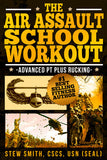
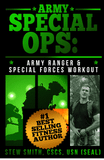


Advanced Running Program - Special Ops Supplement Plan
USMC RECON / MarSOC Workout
USMC OCS / TBS Workout
USMC IST and PFT
The Combat Conditioning Workout
Air Force PJ / CCT Workout Battlefield Airman Prep Course
The UBRR Upper Body Round Robin Workout / Spec Ops version
The Coast Guard Rescue Swimmer / Navy SAR Workout
The Service Academy Workout (West Point, Navy, Air Force Academy)
The Navy, Air Force, Marine Corp Boot Camp Workout
The Law Enforcement Physical Fitness Workouts
The FBI Academy Workout | FBI Workout Vol 2
The DEA Workout
The FLETC Workout - Ace the PEB
The PFT Bible: Pushups, Sit-ups, 1.5 Mile Run
The Fire Fighter Workout - Ace the CPAT
Beginner / Intermediate / Advanced Fitness Guides
The Beginner / Intermediate Guide to Fitness
Reclaim Your Life Erin O'Neill Story (beginner / intermediate)
Veterans Fitness Baby Boomer and a Flat Stomach
Circuit Training 101 Beginner / Intermediate Guide to the Gym
The Busy Executive Workout Routine
The Obstacle Course Workout Prep for Races or Mil, LE, FF
TRX / Military Style Workouts Adding TRX to Military Prep Workouts
Tactical Fitness Over 40 Series
Tactical Fitness (40+) Phase 1, Phase 2, Phase 3, Phase 4
Online Coaching Options
Online PT CLUB - Weekly Workouts created personally for you.
New Member's Only Content / Services Program!
If you want access to years worth of workouts, many of the top eBOOKs, favorite workouts of the week, free fitness APP, closed Facebook Group, video / picture library of exercises, and more access to LIVE Q/A sessions check out the Stew Smith Fitness Members Section.
The dashboard below has the links to all the information, archives, videos, and links to workouts, podcasts, live Q and A lessons.
Consider this! - A Membership Program and Gain Access to Exclusive Content
(click for Fitness Club Dashboard - members only)
Questions? Just email - Stew@StewSmith.com
At StewSmith.com - List of Products and Services
- FREE Articles
- Podcasts and Swimming Videos (Youtube, TikTok, Instagram)
- eBooks
- Books and eBooks in PRINT
- Stew Smith Fitness Club membership site
- Online Coaching
Stew Smith Fitness
Find more about our programs on our social media:
Instagram TikTok Youtube
Stew Smith is a former Navy SEAL and fitness author certified as a Strength and Conditioning Specialist (CSCS) with the National Strength and Conditioning Association. Visit his Fitness store if you're looking to start a workout program to get you TO and THROUGH any tactical fitness training program OR create a healthy lifestyle. Send your fitness questions to stew@stewsmith.com.
